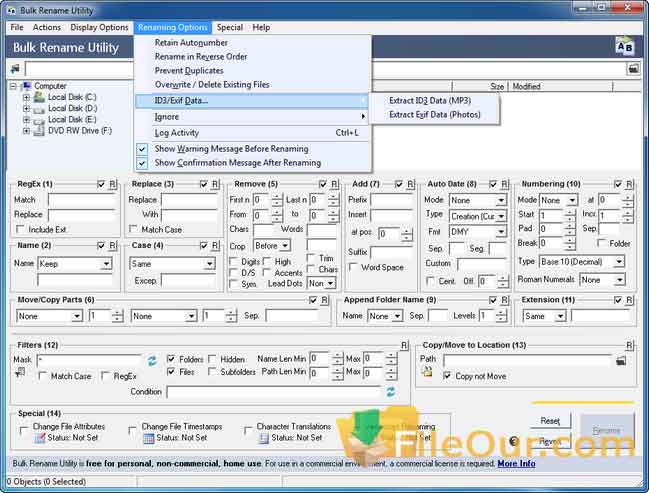

- Batch file rename remove last character install#
- Batch file rename remove last character plus#
- Batch file rename remove last character free#
If you haven't used Vim before, I would recommend using another answer so you don't have to learn Vim just to rename files. So if all goes well you should have renamed all of your files. :wq to save and exit and then :wq again to confirm the changes. So after copying some files to the floppy, go into dos and navigate to the floppy drive. CAUTION - Id copy at least some of those files to a floppy first and then test the command on the files on the floppy before running it on the hard drive. Move to the second line and move the cursor to the beginning of the line ( j, 0) and type :2,$norm! will run the macro you just made (named "a") from the second line all the way until the end of the file. Both the old filename and the new filename must be on the same drive. So for your example, if you started on the very first line of the file you would use these commands:Ġ, f., de (moves cursor to start of the line, finds the first ".", then deletes to the last character before the second "." before gif)

Use a Vim macro to record the changes you wish to make. Make sure there are no other files except the ones you want to rename. Run Ranger and navigate to the directory that has the files you wish to rename.
Batch file rename remove last character install#
You can install it as a Vim plugin or just download the. But if you're already familiar with Vim it should be a simple task! It uses Vim keybindings for navigation and such, so if you're not familiar with vim it could get confusing/difficult. I personally enjoy using ranger for these type of things. gif are matched, and all replaced with just. So the dot, the final digits, and the suffix. $ anchors the match to the end of the filename.Here's what the regular expression \.\d+\.gif$ does: gif files in the current directory that would be pointlessly matched by *. Still, you might choose to do so, if you have many non. gif suffix in the regular expression so you don't have to filter for it in the filenames you pass to rename. Remember that -n just shows you what will be done, and you must then remove it to actually rename files. gif files in the current directory are named according to your description and need to be renamed, you can use: rename -n 's/\.\d+\.gif$/\.gif/' * If you want to use a simpler rename command, and you know all the. This is to say that the solution resembles the problem. I've chosen this approach-among many possible approaches-because the command expresses precisely the naming scheme that you wish to operate on. It's possible to write a shorter rename command that ought to work. This helps avoid renaming files you don't want to rename. If the file does not begin with the necessary pattern, then there is no match. The backslash is necessary because when a dot appears in a regular expression it otherwise matches any single character. The effect is to ensure those characters are present just before the part we will actually replace. These are the characters we want to keep, after all, not the ones we want to replace. \K forgets the preceding matched characters.I suggest this, though I'll show an alternative below: rename -n 's/^\d matches a sequence of exactly eight digits. They have been a big help to me.The rename command (you can also run it as file-rename) is well-suited to this task. There is also a great Name Mangler Google Group where you can get your questions answered and some very advanced features and methods get discussed.
Batch file rename remove last character plus#
All of that plus being able to use Regex to build very complicated renames. Once of the many things that makes using a tool like Name Mangler valuable is that you can undo your changes, view a history of your changes, and create a "droplet" that make running the name change on other files really convenient.
Batch file rename remove last character free#
There are free options out there, but Name Mangler offers a ton of features that make it well worth the $19.00 to me. I use Name Mangler 3 for file and folder renaming.


 0 kommentar(er)
0 kommentar(er)
